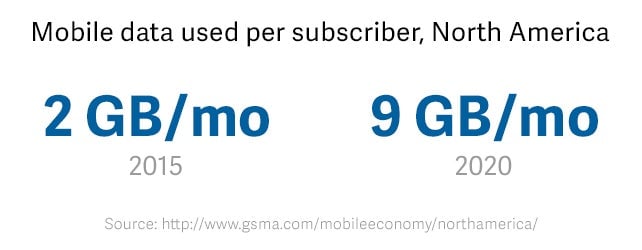Can you navigate the path to broadband?
Demand for mobile and fixed broadband has reached unprecedented levels and continues to grow with increased global reliance on streaming video, big data, the internet of things, and data centers. To keep up with this demand, broadband infrastructure has become increasingly complex, both in terms of investment and technology. It’s clear that collaboration between broadband providers and other stakeholders is key to meeting the needs of the future. Here are a few examples of how providers are connected to the communities they’re bringing online.

The US broadband industry has invested $1.4 trillion since 1996. Here’s where that goes
Demand for mobile and fixed broadband has reached unprecedented levels and continues to grow with increased global reliance on streaming video, big data, the internet of things, and data centers. To keep up with this demand, broadband infrastructure has become increasingly complex, both in terms of investment and technology. It’s clear that collaboration between broadband providers and other stakeholders is key to meeting the needs of the future. Here are a few examples of how providers are connected to the communities they’re bringing online.

Education and the skills gap
Broadband investment loses its value if there aren’t enough skilled workers improving the infrastructure, which makes strengthening STEM education initiatives critical. The White House’s ConnectED initiative, launched in 2013, aims to connect 99% of American students to high-speed broadband by 2018, allowing for more interactive learning. As part of this initiative, Apple and AT&T have partnered to link over 30,000 students and teachers to the latest mobile broadband technology.
At the college and post-grad level, a major challenge is that broadband technology is evolving faster than course materials. Industry leaders and schools are working together to attract students, understand education needs, and create pipelines to employment. AT&T, Udacity, and Georgia Tech have co-created a first-of-its-kind master’s program in computer science to train students in specialized, certifiable skills. And the telecom industry, the Department of Labor, and other government agencies operate the Telecommunications Industry Registered Apprentice Program, which identifies workforce needs and develops training standards for apprenticeships and on-the-job learning.
State and local governments
In some cities and towns, broadband providers and local officials are formalizing cooperative processes to make investment dollars go further by eliminating inefficiencies and barriers to access. These utility coordination meetings bring together city planners, elected officials, utility representatives, and broadband providers to discuss land-use plans, zoning decisions and local concerns.
Cities have also found it useful to involve industry stakeholders in developing rights-of-way ordinances, through either a comment period or joint review sessions. Some jurisdictions have created joint task forces to examine proposals from both public and private perspectives. As a result, all parties gain a better understanding of each other’s interests, technical concerns, costs, and capacities.
Federal government
The Wireless Infrastructure Association, an industry group that advocates for national broadband deployment, has worked with the National Telecommunications and Information Administration’s Broadband Opportunity Council to identify ways in which federal regulators and industry interests can encourage broadband investment and make infrastructure projects more effective and efficient.
Some of the solutions are remarkably low-tech: for example, training federal field-office representatives so permit applications can be processed with fewer delays—and so broadband providers have a known point of contact for negotiations and questions. Other solutions under consideration include mapping coverage gaps on federal lands and identifying areas already designated for telecom use; improving inter-agency communication processes; adopting a “dig once” policy mandating that new construction of highways include a conduit to house underground wires; and, perhaps most important, creating ongoing opportunities to share specialized knowledge about industry needs, consumer needs, the state of technology, and the effect of current regulations.
Regardless of the roadblocks at hand, it’s obvious that contemporary broadband providers navigate a diverse set of obstacles in their mission to ensure that all US citizens can easily merge onto the information superhighway.
Building a connected community requires the vision and commitment of businesses like AT&T, who invests more than anyone else in the US’ wireless infrastructure. For more information on AT&T’s groundbreaking technology and content projects, visit their
Innovation Blog
and
DIRECTV NOW page
.
This article was produced on behalf of AT&T by Quartz creative services and not by the Quartz editorial staff.